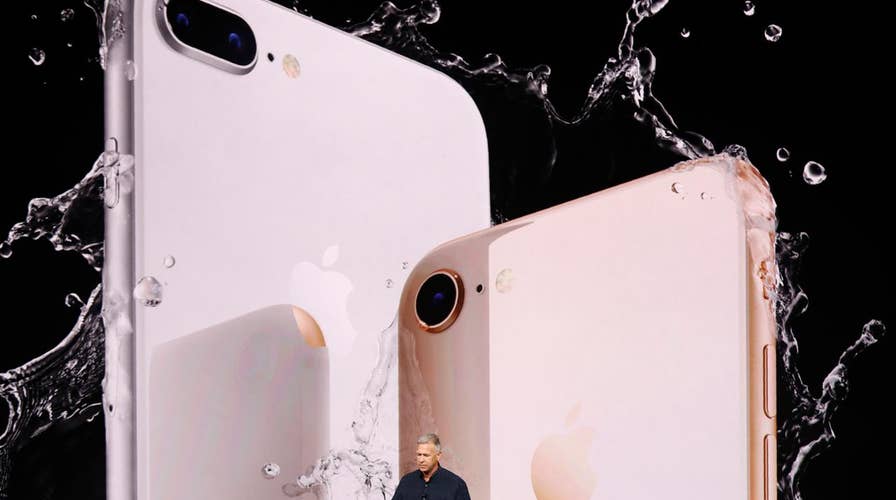How much does the iPhone 8 really cost to build?
A breakdown of the iPhone 8 and iPhone 8 Plus detail just how much it costs Apple to build the devices
Following Apple's latest event announcing new iPhones and other products, some have bemoaned the high-cost of the products. A breakdown of the iPhone 8 and iPhone 8 Plus detail just how much it costs Apple to build the devices.
According to estimates from research firm IHS Markit, the bill of materials for the iPhone 8 is $247.51. Apple sells the device, unsubsidized, for $699, $50 more than the starting price for the iPhone 7 at launch.
The bill of materials (BOM) for a 64 GB iPhone 8 Plus comes out to $288.08. After $7.36 in "basic manufacturing costs" are added, the iPhone 8 Plus costs Apple $295.44 to build. The 8 Plus costs $799, $30 more than the iPhone 7 Plus at launch.
APPLE UNVEILS IPHONE 8, IPHONE X
Most iPhone buyers do not pay the full freight for the phones. They are purchased via a contract with a carrier which often subsidizes a part of the cost. There is also a way to pay for the phone over time, either through Apple's iPhone upgrade program or other promotions run by various carriers.
“The higher total BOM cost for the iPhone 8 Plus can’t be tied to a single area or feature. The higher cost is the result of slower annual component cost erosion tied in with additional features,” Andrew Rassweiler, senior director of cost benchmarking services for IHS Markit, said in a statement. “From a teardown perspective, the biggest cost adders would be the increased NAND flash memory content and new wireless charging components.”
Apple CEO Tim Cook has defended the cost of the Apple products, saying they are not only for rich people.
"If you look across our product lines, you can buy an iPad today for under $300," Cook told Fortune in a recent interview. "You can buy an iPhone, depending upon which one you select, for in that same kind of ballpark. And so these are not for the rich. We obviously wouldn't have over a billion products that are in our active installed base if we were making them for the rich."
In the past, Cook has bemoaned the product cost breakdowns. On a 2015 earnings call, Cook said that he has "never seen one that is anywhere close to being accurate."
IHS attributes the rise in the cost of the iPhone 8 and 8 Plus to several features, including the new A11 Bionic chip, the neural engine (utilized for artificial intelligence) and especially the camera components.
WILL CONSUMERS PAY $1,000 (OR MORE) FOR THE NEXT IPHONE?
"From our [bill of materials] analysis, we can see that Apple invested heavily in the camera capabilities of the iPhone 8 Plus due to the increase in component costs,” said Wayne Lam, principal analyst, mobile devices and networks for IHS Markit. “Based on these investments, we expect improvements not only in the optics in the dual camera module, but also in computationally intensive requirements of the portrait lighting capture feature that rely on the graphical horsepower and neural engine (AI) of the A11 Bionic chip.”
In addition to the aforementioned iPhones, Apple also announced the iPhone X (pronounced "ten"), which will start at $999 unsubsidized.
IHS has not done a breakdown analysis of the iPhone X yet, which is slated to go on sale in early November.
Follow Chris Ciaccia on Twitter @Chris_Ciaccia





















